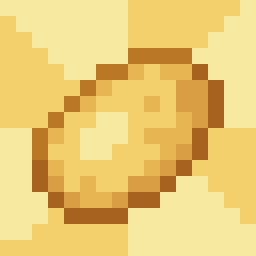2
Get 50% off your first month of KiwiCo at https://www.kiwico.com/kurzgesagt with code KURZGESAGT.
This video was sponsored by KiwiCo, thanks a lot for the support!
Sources & further reading:
https://sites.google.com/view/sources-sources-lastthing/
The universe today is happy and healthy, with exciting things going on – but at some point the night will turn dark. Everything that once was, will peacefully sleep forever.
But what is the last thing that will ever happen? Let's travel to the end of the universe…
OUR CHANNELS
▀▀▀▀▀▀▀▀▀▀▀▀▀▀▀▀▀▀▀▀▀▀▀▀▀▀
German: https://kgs.link/youtubeDE
Spanish: https://kgs.link/youtubeES
French: https://kgs.link/youtubeFR
Portuguese: https://kgs.link/youtubePT
Arabic: https://kgs.link/youtubeAR
Hindi: https://kgs.link/youtubeHI
Japanese: https://kgs.link/youtubeJA
Korean: https://kgs.link/youtubeKO
HOW CAN YOU SUPPORT US?
▀▀▀▀▀▀▀▀▀▀▀▀▀▀▀▀▀▀▀▀▀▀▀▀▀▀
This is how we make our living and it would be a pleasure if you support us!
Get Products designed with ❤ https://shop-us.kurzgesagt.org
Join the Patreon Bird Army 🐧 https://kgs.link/patreon
DISCUSSIONS & SOCIAL MEDIA
▀▀▀▀▀▀▀▀▀▀▀▀▀▀▀▀▀▀▀▀▀▀▀▀▀▀
TikTok: https://kgs.link/tiktok
Reddit: https://kgs.link/reddit
Instagram: https://kgs.link/instagram
Twitter: https://kgs.link/twitter
Facebook: https://kgs.link/facebook
Discord: https://kgs.link/discord
Newsletter: https://kgs.link/newsletter
OUR VOICE
▀▀▀▀▀▀▀▀▀▀▀▀▀▀▀▀▀▀▀▀▀▀▀▀▀▀
The Kurzgesagt voice is from
Steve Taylor: https://kgs.link/youtube-voice
OUR MUSIC ♬♪
▀▀▀▀▀▀▀▀▀▀▀▀▀▀▀▀▀▀▀▀▀▀▀▀▀▀
700+ minutes of Kurzgesagt Soundtracks by Epic Mountain:
Spotify: https://kgs.link/music-spotify
Soundcloud: https://kgs.link/music-soundcloud
Bandcamp: https://kgs.link/music-bandcamp
Youtube: https://kgs.link/music-youtube
Facebook: https://kgs.link/music-facebook
The Soundtrack of this video:
Soundcloud: https://bit.ly/3R9sWp5
Bandcamp: https://bit.ly/49MbKOz
If you want to help us caption this video, please send subtitles to subtitle@kurzgesagt.org
You can find info on what subtitle files work on YouTube here:
https://support.google.com/youtube/answer/2734698?hl=en-GB&ref_topic=7296214
Thank you!
🐦🐧🐤 PATREON BIRD ARMY 🐤🐧🐦
▀▀▀▀▀▀▀▀▀▀▀▀▀▀▀▀▀▀▀▀▀▀▀▀▀▀
Many Thanks to our wonderful Patreons (from http://kgs.link/patreon) who support us every month and made this video possible:
robek, Brad Christensen, Asija Newns, Pedro Castro Verdezoto, Lucas Watkins, damien perolle, Fab Cars, alomanola, MikyF2K, Mithilesh Hinge, okor, Lucan, The Gnome, Kyung Geun Kim, Misa Brass, Martin Hippenstiel, Morgan, Anthony Distel, Filip Rogowski, Gabe, Tobias Hofmann, Zaret, Bootools, David Earl, Ben Hamilton, still [Redacted], polyploidy, Elgenzay, Jared, Soda celeste, Felix, Benjamin Goodrich, Taher Rangwala, Jesse Barnes, WillowTree, DarkKot 686, Aaron Phillips, Luc Royal, Lukas Meier, esamoth, Smithius, Mermor, Laura Kühne, Tyler Fendone, gassi30, Andres Arce, Suzanne frounfelter, Akito Nozaki, SirRender, Space, Daniel Hofmeister, Dan M, Jacob Culp, ReyesX77, Aaron T Haltman, DJ Dubbes, SchnarcheNoah, Keira Standing, Steven Lamontagne, Bliss, David Anderson, Uhh Uhhh Uhhh, The Paul Family


I’d imagine that at that point, the expansion of the universe would nullify the tiny amounts of gravity between the particles after the supernova. The only way I’d imagine them staying together is them forming black holes, which this paper in Kurzgesagt’s sources list seems to say is unlikely
Of course, I don’t know near enough to actually understand much of what this paper is saying, so I could be completely misinterpreting this.
I’m pretty sure the expansion isn’t too crazy fast, considering the star itself was stable.